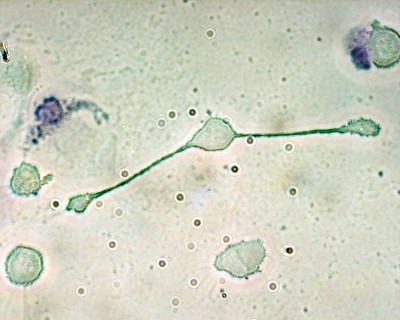Histological studies validate Rexin-G as targeted gene therapy for cancer
promise of Epeius Biotechnologies' Rexin-G as an effective targeted
gene therapy platform for metastatic cancer.
According to Epeius, a privately held biopharmaceutical company based in Los Angeles, US, Rexin-G is "the world's first tumour-targeted genetic medicine for cancer therapy". A report in the June issue of The International Journal of Oncology (Vol. 30, pp. 1,297-1,307) examines the histopathological features of metastatic solid tumours obtained from patients who had received Rexin-G either as monotherapy or in combination with the immune-stimulating therapy Reximmune-C. Both approaches incorporate Epeius' Targeted Delivery System (TDS) technology, which is used for the preferential delivery of cytocidal and immune response genes to diseased tissue in cancer patients. Rexin-G is currently in Phase I/II clinical trials in the US for metastatic or locally advanced pancreatic cancer, a programme that was recently extended to breast cancer and sarcomas that have failed standard chemotherapy. The product has also been granted accelerated approval by the Bureau of Food and Drugs in the Philippines for the treatment of all solid tumours resistant to chemotherapy. In addition, Rexin-G is approved under an expanded access programme in the Philippines for use as a first-line and adjuvant therapy for pancreatic and breast cancer, and as a second-line therapy for all other solid tumours refractory to standard chemotherapy. Another Phase I/II trial in the Philippines is looking at Reximmune-C in combination with Rexin-G as a cancer vaccine for solid tumours considered resistant to standard chemotherapy. The goal is a treatment regimen that can reduce tumour burden while recruiting the body's immune cells to prevent cancer recurrence. Both products are administered by intravenous infusion. Epeuis had previously reported that intravenous infusions of Rexin-G induced tumour regression, reduced tumour burden and improved survival while enhancing the overall quality of life of patients with otherwise intractable cancers. In the International Journal of Oncology paper, Dr Erlinda Gordon, medical director of Epeius, and colleagues in the Philippines build on this evidence base by describing how significant apoptosis, necrosis and reparative fibrosis, along with varying degrees of haemorrhagic necrosis and overt anti-angiogenesis, were consistently observed in tumour obtained from patients treated both with Rexin-G and the Rexin-G/Reximmune-C combination. In the latter case, Rexin-G was administered first to induce apoptosis and necrosis in the metastatic tumour nodules, followed by Reximmune-C infusions, with the aim of recruiting immune cells discretely into the same lesions. The goal of this two-step approach, the researchers noted, was to "bring a complement of cells involved in humoural and cell-mediated immunity in close proximity to the immunising tumour antigens in a concerted effort to assist in tumour eradication and to promote a cancer vaccination in situ". One striking feature of the study results, the researchers said, was the "conspicuous and extensive" penetration of Rexin-G not just into primary tumours and metastatic foci but also into both regional and distant lymph nodes. "Since the lymphatic system is a major route of metastasis for many types of cancer, the clinical significance of the finding that Rexin-G is able to travel through the lymphatic system as well as the circulatory system, to remain biologically active … and to induce apoptosis and necrosis in sentinel lymph nodes and distant lymph nodes, wherein the immune cells are naturally located, cannot be overstated," they commented. The tumours of patients treated with Rexin-G plus Reximmune-C appeared to have a greater degree of necrosis, haemorrhage and cystic formations than the tumours of patients given Rexin-G alone, Gordon et al reported. In one patient with widespread metastatic breast cancer, the biopsied tumour nodule showed complete necrosis with no residual tumour. There are three components to Epeius' TDS technology. The targeting element is a pathotropic or disease-seeking guidance system, created by incorporating a physiological surveillance function inherent in von Willebrand clotting factor. This factor is responsible for guiding platelets to exposed collagen in wounds, cancers and areas of tissue destruction. Stealth nanoparticles, in the form of highly engineered retroviral vectors, provide the technology's therapeutic delivery vehicle. Then comes the genetic payload: a dominant negative mutant construct of the human cyclin G1 gene in the case of Rexin-G, and the cytokine gene, granulocyte macrophage colony stimulating factor (GM-CSF), for Reximmune-C.




